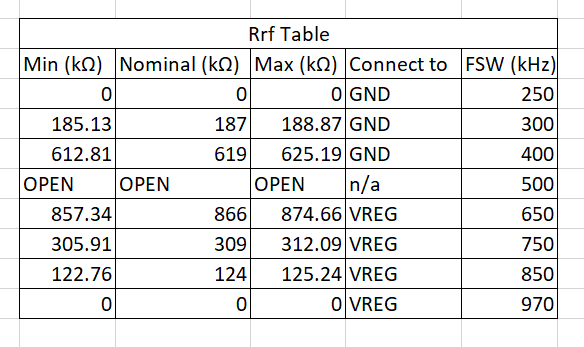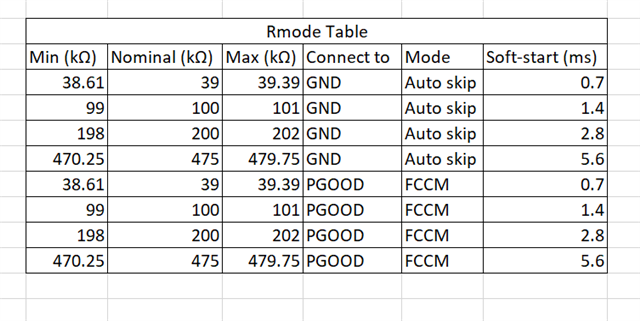Hello team,
I have a question about TPS53355's setting resistor requirement.
Could you let me know Min/Max requirement for resistor value of Rmode and Rrf?
Datasheet table 7-1 and table 7-3 show only one resistor value for each setting and there is no information of its range.
My customer is currently using multiple resistors combination for making the table value but they would like to configure it with more simple.
Best regards,



